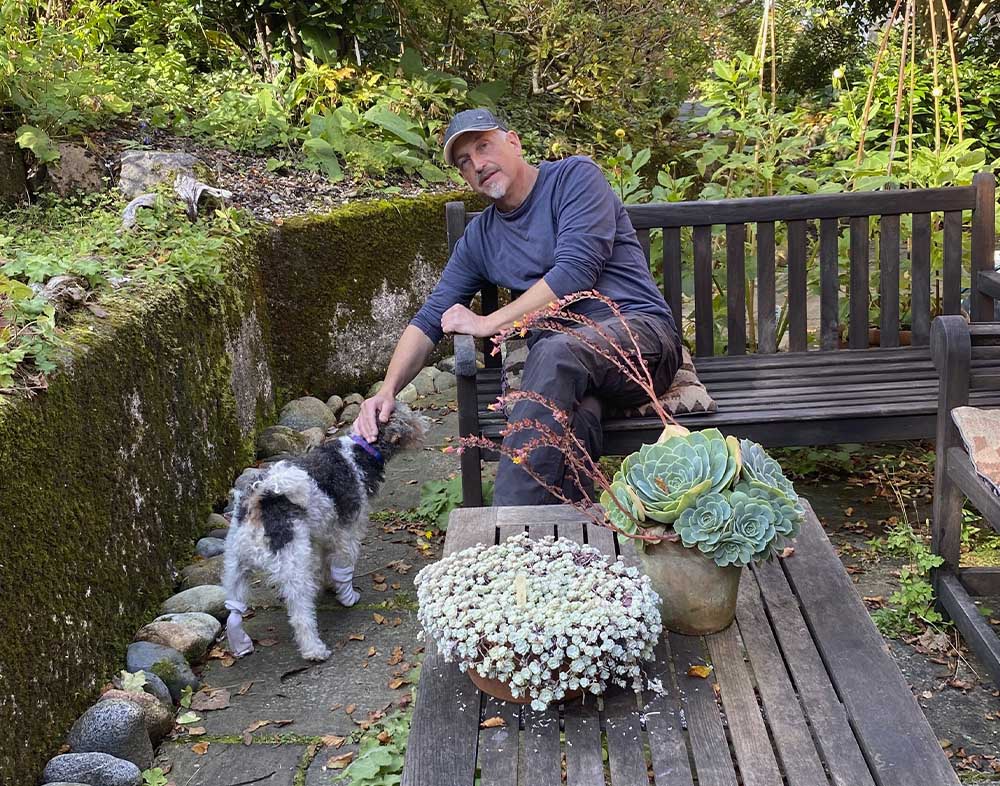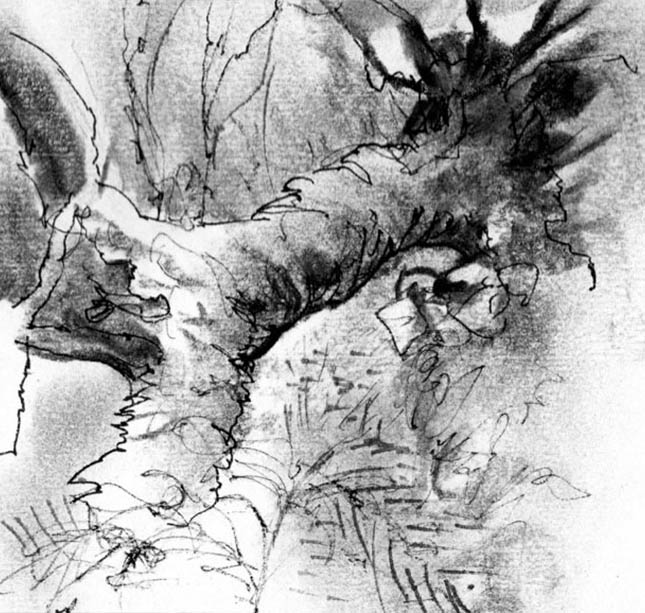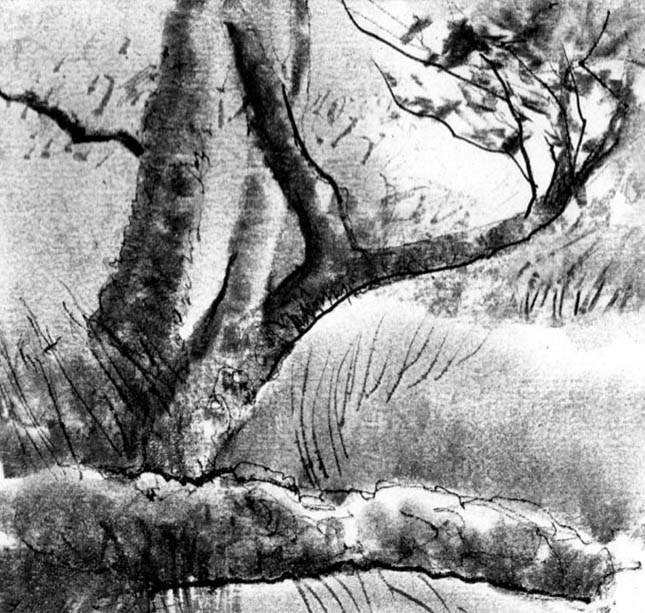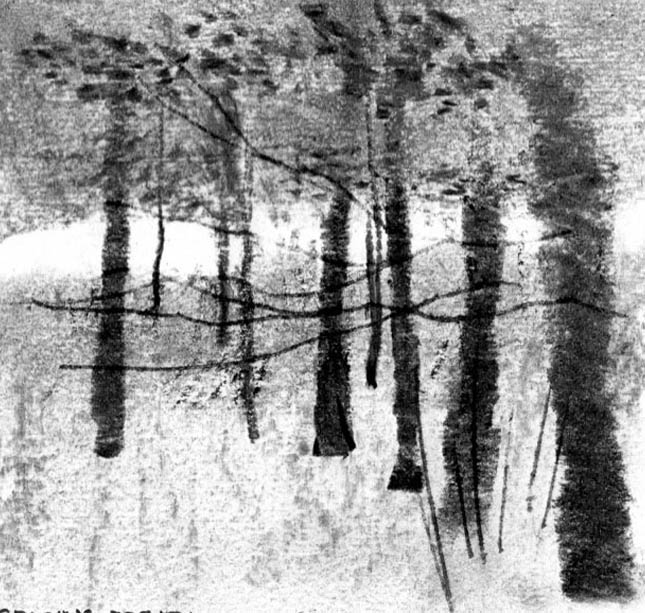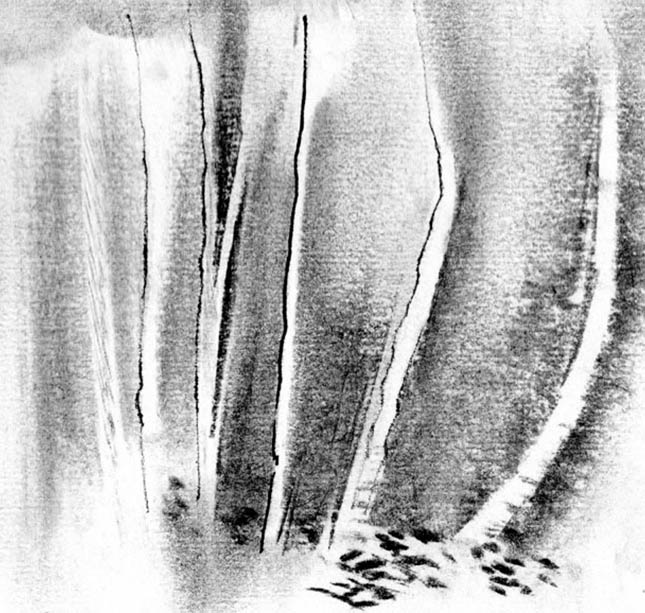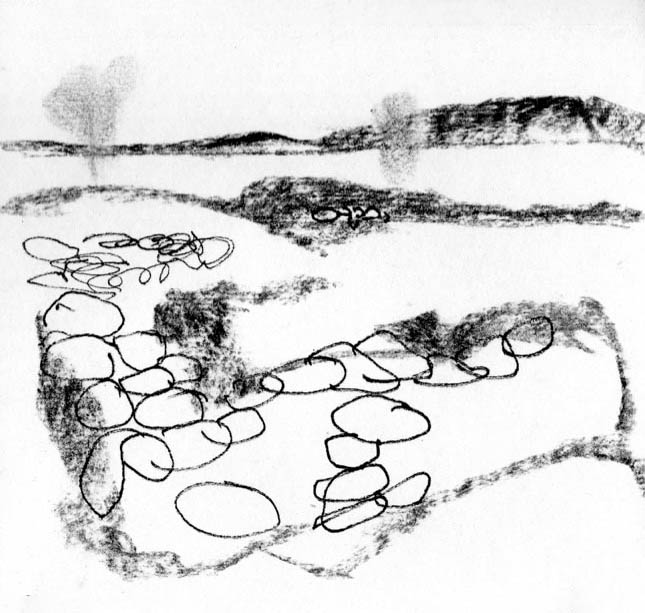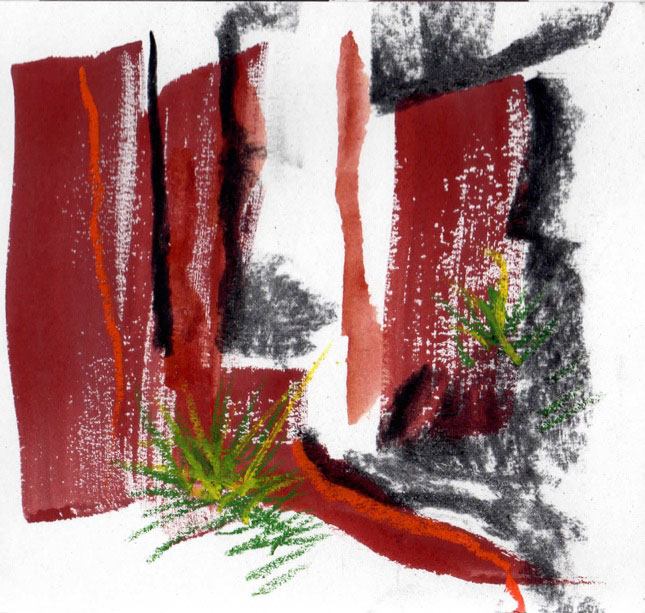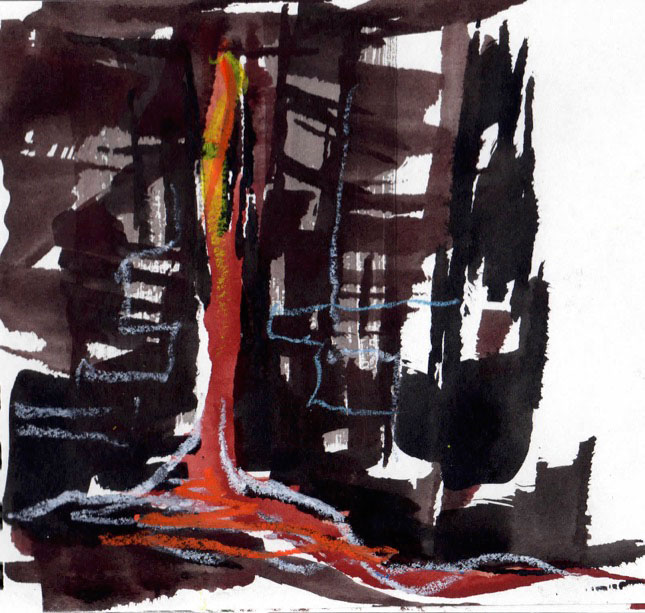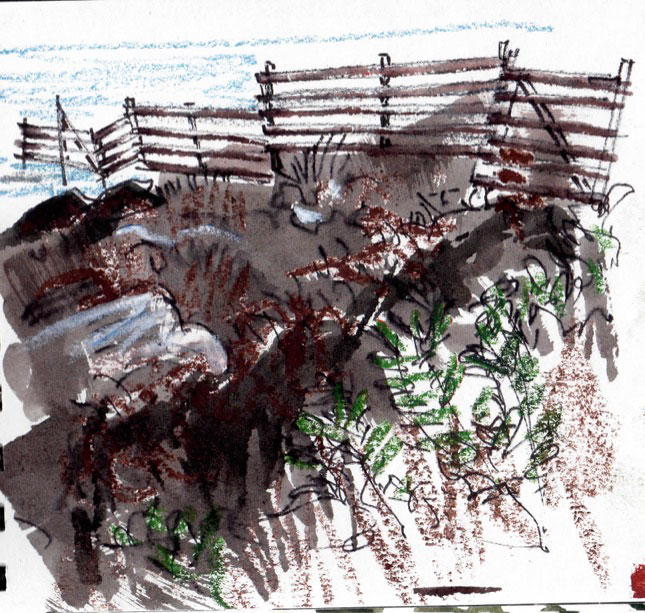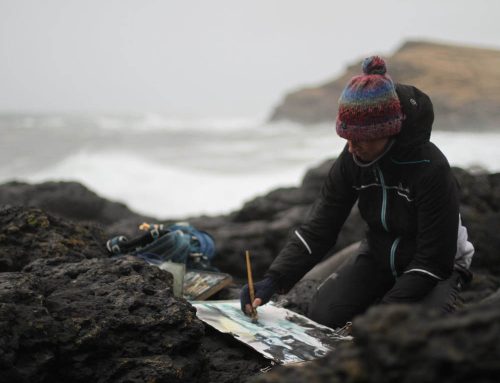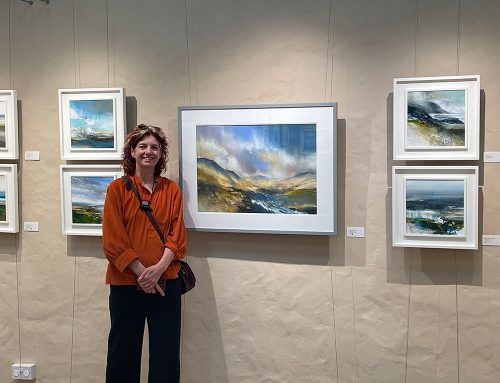Steve Bretel October 2019
The first day of my residency began with some morning sketching at the cottage, after which I packed up my outdoor gear and art materials into the van. During research beforehand, I’d discovered there was a memorial on the reserve dedicated to naturalist Brian Brookes. I managed to buy a copy of his book, and this came with me (the memorial being one of the first things I sketched on site). I drove to Acharn, to meet with reserve ranger Steve Hardy. During a walk through the mature oak woods overlooking Loch Arienas, it soon became evident that Steve has a wealth of information gleaned from his many years spent working on the reserve, and I was only just scratching the surface of his experience. His role involves species monitoring, keeping invasive species in check, engaging with the public – even path maintenance. The reserve has several distinct areas, and internationally important sites for plants that exist both at altitude and low down in the gorges. He told me about some of the wildlife that live in the woods and also the migrant birds – redwings – that had recently arrived that flocked over our heads appearing like leaves in a stormy wind. He spoke about issues affecting the woods such as when trees topple and fall on to fencing, which, if several deer then managed to gain access, would eat the succulent ground vegetation and strip saplings, preventing new growth and inhibiting regeneration, and for this reason there are many control measures in place such as extensive fence enclosures which also keep out nearby cattle, and these are largely successful.
With so much to see, I decided to start getting a feel for the area through taking photographs, rather than continually stopping to sketch which would have interrupted the flow of Steve’s informative tour. The morning was mostly overcast, but this added to the dramatic Tolkienesque atmosphere, interrupted only by shafts of strong sunlight that shone through when breaks appeared in the clouds above. In this exceptional Scottish example of Atlantic rain forest, dense moss matting covers most of the oak trees here, indicating the present cleanliness and humidity of the air, contrasting with times centuries ago when these trees were coppiced for use in the numerous charcoal burning sites, over ninety of which have been discovered through work largely carried out by archaeologist Jennie Robertson. Pioneering birches, share the area with holly and rowan, and the whole area is home to a vast array of species, both plant and animal – even, as I was told – the elusive badger and pine marten. This was in marked contrast to the change in ground cover with the lack of significant trees, encountered on our walk back over the hillside above the enclosures. Although, as Steve explained, this is in marked contrast to the summer months where the area displays an abundance of plants with the associated insect life, that provide food for the birds and mammals further up the food chain.


